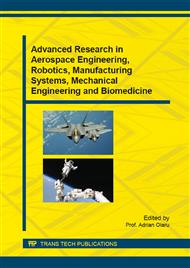p.57
p.63
p.75
p.80
p.85
p.92
p.99
p.104
p.110
Graphical Method in CATIA to Profile the Hob Mill for Generating the Slitting Saw Cutter Teeth
Abstract:
The generation of the ordinate surfaces whirl attached to a centrode (e.g. cylindrical or helical gears teeth generation) with a hob mill is an efficient method, also recommended in machining the teeth of slitting saw cutter with high dimensions. Profiling the hob mill conjugated to the disc-tool (slitting saw cutter) teeth, depending on its tooth profile, is a specific problem. There are known both analytical methods to profile the hob mill – e.g. the Gohman method (which uses an intermediary surface – the reference rack-gear), and graphical methods (developed in AutoCAD). A profiling method, which uses the CATIA environment facilities in graphical design, laying on the principle of helical motion de-composition (Nikolaev theorem) has been recently suggested. In this paper, we present a method for hob mill profiling, in graphical form, based on a complementary theorem (the Minimum distance method). The reference rack-gear, conjugated to the disc-tool teeth, is firstly profiled and then, by starting from it, the peripheral surface of the hob mill for machining the slitting saw cutter teeth is determined.
Info:
Periodical:
Pages:
85-91
Citation:
Online since:
November 2015
Authors:
Price:
Сopyright:
© 2015 Trans Tech Publications Ltd. All Rights Reserved
Share:
Citation:


